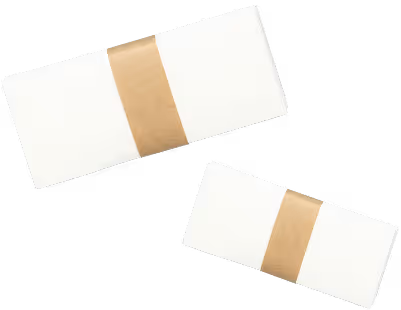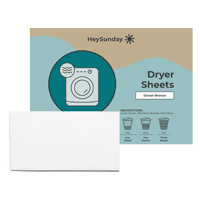
How to Wash a Comforter Like a Pro: Tips to Sanitize for Better Sleep
Washing your comforter at home doesn’t require herculean feats of strength, nor do you need special equipment! In fact, it’s as easy as doing a regular load of laundry.
Comforters make any bed cozier. This bedding uses filling made from warm materials like down, feathers, or cotton, to name a few. And like with any bedding, comforters need regular washing to stay clean and keep looking and feeling fresh for years to come. Plus, they’re prone to gathering dust, allergens, bacteria, and oils with time.
People often worry that they need a special machine or a pro to wash their comforter and forgo this important chore altogether. Fortunately, you can wash your comforter yourself in a few easy steps. All you need is a washer, stain remover, wool dryer balls, and an effective yet gentle laundry detergent to get the job done.
Ready to get washing? Here’s everything you need to know about washing a comforter at home.
How Often Should I Wash a Comforter?
Half the battle of washing your comforter is knowing when it’s time to give it a wash. While there is no hard and fast formula to go by when it comes to comforter cleaning, the general rule of thumb is to wash your comforter every 2-3 months.
However, there are many factors that go into determining the ideal time for this household chore. If you have allergies or your comforter gets a lot of use, you’ll need more frequent washings. If you use a duvet cover that you wash regularly every month, you may not need to wash your comforter as frequently.
You can also tell when it’s time to wash pillows and bedding by spotting some visible clues. Lay out your comforter on a flat surface and inspect it for visible stains, noticeable odors, or less fluffiness.
Step-by-Step Guide to Washing Comforters
These easy steps will help make washing comforters at home a breeze. Gather together some supplies and get started!
What to Know
Before getting started with the actual washing, you need to know what your comforter is made of. Many comforters are made with polyester or down filling, though other common fillings may include wool, cotton, and/or silk.
Check your comforter’s tag to determine the exact blend of materials you’re working with. Down comforters require gentle laundry detergents and lukewarm or cold water wash cycles. Down alternatives like polyester or cotton can handle mild laundry detergents and warm water washes, but never hot.
When you’re looking at the comforter’s care label, take note of any specific washing or care instructions. These are the manufacturer’s recommendations and are the best route to take when it comes to washing a comforter.
What You'll Need
To wash your comforter, you’ll need some supplies. Likely, you already have these items on hand!
- A mild detergent: We recommend HeySunday laundry detergent sheets for the best cleaning results.
- Stain remover for pre-treating any visible stains.
- A clean, spacious area for pre-wash inspection and post-wash drying.
- Wool dryer balls or tennis balls to help fluff the comforter filling in the dryer.
- If you have an extra-bulky or king-size comforter, you'll need a large-capacity washer and large-capacity dryer.
Step 1: Inspect and Pre-Treat Stains
Lay your comforter out flat so that you can see its whole surface, and inspect the comforter for any damage. Then, check for stains and treat any with a gentle stain remover. Here are some extra tricks to help get out common stains
- Coffee and tea stains: Dab the stained area with cold water. Grab a soft-bristled toothbrush and dish soap. Use the toothbrush to gently work the soap into the stained fabric. Let the soap sit for five minutes, and then continue with the steps for washing your comforter.
- Makeup: Apply stain remover or a pea-sized amount of laundry detergent solution to the stain. Gently work it into the fabric and let it sit for 5-10 minutes. Blot with a damp cloth and repeat until the stain is mostly gone. Then, launder as usual.
- Pet urine: Soak the area with stain remover or a mixture of vinegar and baking soda. Then, dab it with laundry detergent and let it sit for 15 minutes. Put your comforter in the washer to launder as usual.
Step 2: Select the Right Washer Settings
Once your comforter has been treated for stains, it’s time to set your washer settings. Generally, it’s best to use a gentle cycle with lukewarm water, and an extra rinse setting can help ensure a thorough clean. Of course, adjust these settings based on the comforter material (down, synthetic, etc.) and the manufacturer’s care instructions.
Step 3: Load the Comforter into the Washer
Put your comforter in the washer and ensure that it's evenly distributed (especially if you have a top-load washer with an agitator). To get the best and most thorough cleaning, avoid overcrowding the washing machine. Remember that not all washers are equipped to handle the bulk of a large or extra-heavy comforter, so it’s best to use a large-capacity washing machine or visit your local laundromat in these cases.
Step 4: Add a Gentle, Non-Toxic Laundry Detergent
Use the appropriate amount of a mild detergent like HeySunday’s laundry sheets. These plant-based, eco-friendly detergent sheets contain a pre-portioned concentrate to get the most effective clean without any waste. They’re also safe on most fabrics so that they can clean anything from clothes to comforters. Once you’ve added your detergent sheets, close the washer door and start the wash cycle.
Step 5: Transfer to the Dryer
When the wash cycle is done, transfer the comforter to the dryer. Adjust the drying cycle to a low heat setting for most comforters. For fluffiness, toss in a few wool dryer balls. This is optional but highly recommended for down comforters.
Step 6: Finish Drying and Air Fluff
Complete the drying process in the dryer or hang the comforter out to air dry if needed in the sunlight or in front of a fan. It’s important to ensure the comforter is fully dry before using it again to prevent mildew. You can make sure your comforter is dry by giving it a pat down to feel for damp spots. If you notice that the filling is still clumped together in areas, the comforter isn’t fully dry.
Special Considerations for Different Comforter Types
Not all comforters are made the same. Here are some tips to keep in mind when washing different comforter types.
Down and Feather Comforters
Down comforters, or any type of feather comforter, are heavenly to sleep under but are delicate due to their filling and should be handled gently. When washing this type of comforter, avoid harsh chemicals, bleach, or fabric softener, which can damage the feathers or leave a filmy residue. Air drying is the best method for drying a down comforter.
Fluff the comforter regularly to distribute the fill evenly and maintain its loft. When not in use, store the comforter in a breathable cotton bag to prevent mildew and other allergens.
Synthetic Comforters
Synthetic fills are the most resilient to frequent washing. These can be tumble-dried on low heat with wool dryer balls to prevent the filling from clumping. To keep your synthetic comforter looking brand new, limit its exposure to direct sunlight to prevent color fading.
Cotton Comforters
Comforters made with cotton fillings can handle higher wash and drying temperatures, but always check the care label before washing. Use gentle, eco-friendly detergents to preserve the fabric’s integrity. Since cotton is prone to wrinkling, you can iron it on a low setting if necessary to remove wrinkles.
Wool Comforters
Wool comforters should be aired out regularly, as wool naturally resists dirt and dust. These types of comforters should only be spot-cleaned and dry-cleaned when necessary. Avoid machine washing in order to protect the delicate wool material.
When not in use, wool comforters should be stored in a cool, dry place, ideally with cedar balls to repel moths.
Maintaining Comforter Quality Between Washes
Washing is only one part of the equation when it comes to keeping your comforter in top shape. Maintain the quality of your comforter with these tips:
- Regular Fluffing: Fluff your comforter daily to maintain its loft and ensure even distribution of the fill.
- Sunlight Exposure for Freshness: Air out your comforter in indirect sunlight once a month to freshen it up and eliminate odors.
- Using Protective Covers: Use a duvet cover to protect the comforter from body oils, spills, and dust. Wash the cover frequently.
- Spot Cleaning Spills: Address spills immediately with spot cleaning to prevent the stain from setting in.
- Avoiding Moisture Accumulation: Ensure your comforter is completely dry after use, especially in humid environments, to prevent mildew.
The Bottom Line
It's easy to learn how to wash a comforter and get back to better sleep–no matter what type of comforter you have. Even with a standard-size washing machine or the machine at your local laundromat, you can breathe new life into your comforter and get rid of pesky stains, dust mites, odors, and allergens.
One of the key ingredients in comforter care is choosing an effective laundry detergent. You’ll want to look for one that is gentle and allergen-friendly, yet doesn't skimp on cleaning power. HeySunday laundry detergent sheets fit the bill in being gentle enough for a down comforter while also delivering on cleaning power.
Our sheets boast an eco-friendly formula that dissolves in any water temperature and uses safer ingredients, so you can sleep under your clean comforter knowing that there aren’t any harmful chemicals or residue clinging to the fabric. Plus, with a money-back guarantee and free shipping, there’s no reason not to try HeySunday!














“My sheets have never felt cleaner. I’m hooked.”
“Finally — detergent that actually works and doesn’t take up half the shelf.”
“Hey Sunday WORKS. Great for stains, and no buildup in the washer.”
“We switched from liquid. The scent is amazing and it saves us money.”
“I’ve got total control with HeySunday. I’ll never go back to powder.”